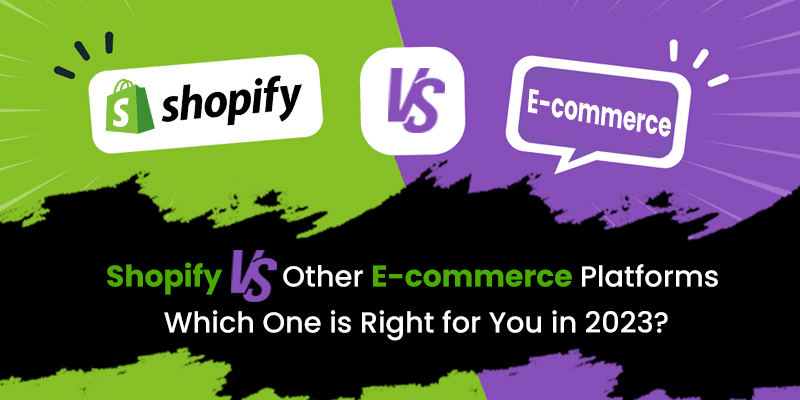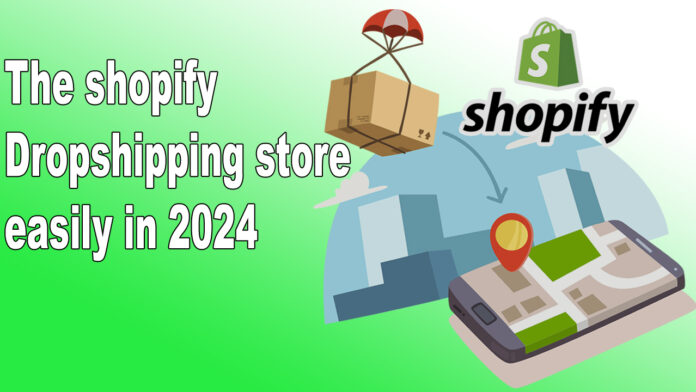The ecommerce landscape is a dynamic realm that evolves continuously and as we step into the year 2024 entrepreneurs are fervently seeking accessible and streamlined methods to harness the vast potential of online retail. Shopify standing tall as a leading e-commerce platform has become a guiding light for individuals venturing into the lucrative world of dropshipping. In this comprehensive guide, we will unravel the intricacies of creating a Shopify dropshipping store in 2024 aligning our strategies with the latest updates and trends that define the e-commerce sphere.
How Shopify Works
- To get started users need to sign up for a Shopify account. During the signup process, you’ll choose a unique store name and provide some basic information about your business.
- Shopify offers different pricing plans based on your business requirements. Plans vary in terms of features and scalability.
- Once signed up you can choose a customizable template for your store. Shopify provides a range of themes and you can further customize them to align with your brand.
- Use the CMS to add and organize your products. Include details such as product descriptions prices and images.
- Configure your payment settings. You can choose from various payment gateways or use Shopify Payments for seamless transactions.
- Once your product design and settings are in place you’re ready to launch your store and start selling to customers around the world.
- Utilize Shopify tools for order management analytics and marketing to continuously optimize your store. As your business grows Shopify scales with you offering advanced features to meet evolving needs.
Table of Contents
Understanding the Dynamics of Dropshipping
Before embarking on the step-by-step journey of setting up a Shopify dropshippingstoreits imperative to understand the essence of dropshipping. Unlike traditional retail models-dropshipping liberates entrepreneurs from the burden of inventory management. When a customer places an order the product is shipped directly from the supplier to the customer eliminating the need for warehousing substantial upfront investments and complex logistics.
Crafting Your Niche and Store Identity
Choosing a Niche
- Align your niche with your passion and market demand.
- Research trending products and identify a profitable niche.
Selecting a Store Name
- Keep it simple creative and memorable.
- Leverage the Shopify business name generator for inspiration.
- Confirm domain availability through a Google search.
Your chosen niche and store name form the bedrock of your brand influencing customer perception and market positioning.
Establishing Your Shopify Account

The first tangible step involves creating a Shopify account. Follow these steps
- Navigate to Shopify’s homepage and initiate a “Start Free Trial.”
- Input your email address create a secure password and specify your chosen store name.
- Answer a series of questions regarding your e-commerce experience and provide personal details.
Upon completion, your Shopify account will be operational paving the way for the next phase.
Optimizing Crucial Settings
Payment Information
- Configure payment options through the Shopify Settings.
- Consider integrating a PayPal account for flexibility and customer trust.
Store Policies
- Utilize Shopify tools to generate standardized policies (privacy policy refund policy terms and conditions).
- Assure transparency and build trust with customers.
Shipping Rates
- Simplify the process by offering free shipping.
- Adjust shipping settings in the Shopify Shipping tab for a seamless customer experience.
Tailoring the Look and Feel of Your Store
Selecting a Theme on Shopify
- Explore the Theme Store for a variety of options.
- Choose a theme based on your budget considering both free and premium alternatives.
Creating a Captivating Logo
- Harness Shopify’s free online logo maker for quick and efficient logo creation.
- Experiment with fonts colors icons and positioning to align with your brand identity.
A visually appealing store coupled with a memorable logo enhances brand recognition and customer engagement.
Integrating DSers App for Effortless Dropshipping
DSers stands out as a pivotal app for seamless integration with Shopify and AliExpress. Streamline your dropshipping process with these steps
- Install the DSers app from the Shopify App Store.
- Create product categories aligned with your intended product offerings.
- Use DSers to search for AliExpress products and seamlessly import them into your Shopify store.
Launching Your Shopify Dropshipping Store
The moment has arrived to take your store live. Follow these steps
- Navigate to the Sales Channels tab on your Shopify admin dashboard.
- Select “Add an online store” to officially launch your store to the world.
Initiating Marketing Strategies for Inaugural Sales
With your store live time to focus on generating traffic and making your first sale
- Explore various marketing channels including Facebook TikTok and Instagram.
- Conduct thorough research to identify the most effective marketing strategies for your specific business.
Implement campaigns and continually test to optimize performance.
Compare Shopify to other ecommerce platforms

- Shopify vs. WooCommerce
- Shopify
- Pros
- Allinone solution with hosting included.
- User-friendly interface is suitable for beginners.
- Extensive app store for additional features.
- Excellent customer support.
- Cons
- Monthly subscription fees.
- Transaction fees on third-party payment gateways.
- WooCommerce
- Pros
- Opensource and free to use (requires WordPress).
- Highly customizable with a wide range of plugins.
- No transaction fees (aside from payment gateway fees).
- Cons
- Requires a separate WordPress hosting plan.
- More technical knowledge may be needed for setup.
- Responsible for site security and maintenance.
2. Shopify vs. Magento
Shopify
- Pros
- Fully hosted no need for separate hosting.
- User-friendly interface.
- App store for additional features.
- 24/7 customer support.
- Cons
- Monthly subscription fees.
- Transaction fees on third-party payment gateways.
- Magento
- Pros
- The source (Magento Open Source) version is free.
- Highly customizable for large enterprises.
- Extensive feature set for scalability.
- Cons
- Requires separate hosting.
- Steeper learning curve.
- Development and maintenance costs can be higher.
3. Shopify vs. BigCommerce
- Shopify
- Pros
- User-friendly interface.
- Large app store for additional features.
- Good for businesses of all sizes.
- Cons
- Monthly subscription fees.
- Transaction fees on third-party payment gateways.
- BigCommerce
- Pros
- No transaction fees (except for external payment gateways).
- Robust built-in features are suitable for growing businesses.
- Responsive customer support.
- Cons
- Monthly subscription fees.
- Smaller app ecosystem compared to Shopify.
4. Shopify vs. Wix
- Shopify
- Pros
- Dedicated e-commerce platform.
- User-friendly interface.
- Large app store for additional features.
- Cons
- Monthly subscription fees.
- Transaction fees on third-party payment gateways.
- Wix
- Pros
- Allinone platform with website-building capabilities.
- Lower starting price.
- Drag and drop website builder.
- Cons
- Less focused on e-commerce.
- Limited scalability for larger businesses.
- Not as many specialized e-commerce features.
Shopify Dropshipping FAQs
How do I start a Shopify dropshipping business?
- Choose a store name.
- Create a Shopify account.
- Optimize settings.
- Build your online store.
- Work on your stores’ design.
- Install a dropshipping app.
- Make your first sale.
What are the benefits of dropshipping on Shopify?
- Less upfront investment is required.
- Easy to start.
- Customizable store.
- Wide selection of dropshipping tools.
- Various payment options.
Is Shopify dropshipping worth it in 2024?
Dropshipping presents advantages but comes with complexities. With careful planning, these challenges can be overcome leading to a thriving Shopify dropshipping business.
In conclusion, the year 2024 offers an opportune moment to dive into the world of Shopify dropshipping. By following this comprehensive guide entrepreneurs can harness the latest tools trends and strategies to carve out a successful niche in the dynamic e-commerce landscape. As you embark on this journey remain adaptable stay informed about industry shifts and continuously refine your store for optimal results. Best of luck on your Shopify dropshipping adventure!

Dilshad Mushtaq loves tech and he shares cool tech news, trends, and updates that everyone wants to understand and enjoy tech, whether you’re a pro or just getting started. Join him on BestSEOZones for simple, fun insights into the world of technology!


